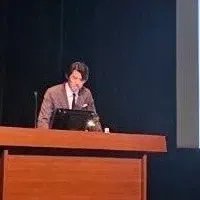
The Significant Growth of Single Use Assemblies Market Expected to Reach $4.89 Billion by 2029
Overview of the Single Use Assemblies Market
The global single-use assemblies market has shown remarkable growth, with a current valuation of approximately $2.52 billion in 2023. This market is anticipated to expand at a robust compound annual growth rate (CAGR) of 13.2%, ultimately reaching an estimated $4.89 billion by 2029. Several factors contribute to this growth, prominently featuring advancements in technology and the increasing investments within the biopharmaceutical research and development (R&D) sector.
Technological Advancements Driving Market Growth
Technological innovation is a primary driving force in the single-use assemblies market. Companies are consistently evolving their product offerings, emphasizing affordability, integration, and ease of implementation. In recent years, there has been a major leap in the development of materials used for disposable components, including bags, filters, and connectors. This has allowed manufacturers to meet stringent regulatory requirements while ensuring high performance and product consistency.
Increased Demand in Biopharmaceuticals
The spike in demand for biopharmaceuticals, particularly biologics such as monoclonal antibodies and vaccines, has significantly contributed to the market's expansion. This surge necessitates advanced solutions like single-use assemblies to guarantee the quality and stability of these products. As a result, biopharmaceutical companies are allocating more resources to explore new techniques for single-use applications and solution providers.
Market Segmentation
The single-use assemblies market is categorized based on product type, solutions, modality, and end-user, each revealing distinct trends. For instance, bag assemblies were the most prominent segment in 2023 due to their advantages, including enhanced strength, flexibility, and sterility. These bags facilitate controlled fluid transfers, thereby minimizing cross-contamination risks and proving to be cost-effective solutions in modern bioprocessing.
Solutions and Modalities
In terms of solutions offered, the market primarily differentiates between standard and customized solutions. Standard solutions have gained a larger market share, widely accepted for their efficiency and reduced capital costs, especially within the pharmaceutical industry.
Moreover, the market's modality segmentation includes categories such as cell and gene therapies and therapeutic proteins. Among these, monoclonal antibodies dominate the market due to their low labor costs and capital expenditures.
Key Players in the Market
Prominent companies in the single-use assemblies space include Thermo Fisher Scientific Inc., Sartorius AG, Merck KGaA, Danaher Corporation, and Avantor, Inc. These organizations employ various strategies, such as product launches and geographical expansions, to maintain and grow their market presence.
Thermo Fisher Scientific Inc.
As a leader in the single-use assemblies market, Thermo Fisher focuses on innovation and consistently invests in R&D initiatives. A robust geographic presence, coupled with its expansion strategies in both developed and emerging markets, positions the company to increase its market share.
Sartorius AG
Sartorius offers a diverse range of single-use assemblies and is known for its technology-driven solutions and substantial investments in R&D. The company has enhanced its global footprint through strategic expansions and has reported stable revenue growth due to recovering demand in its Bioprocess Solutions Division.
Merck KGaA
Merck is recognized for its strong product portfolio and manufacturing capabilities. The company has made significant investments in R&D, focusing on advanced single-use technologies. Despite pandemic-related sales declines, Merck aims to strengthen its market position through strategic investments and customer-centric approaches.
Conclusion
The future of the single-use assemblies market looks promising, with rapid growth expected over the next few years. Technological advancements and increasing investments in biopharmaceutical industries serve as key growth drivers. As the sector continues to evolve, organizations within this space will need to focus on innovation and collaboration to maintain a competitive edge in delivering effective, high-quality single-use assembly solutions.
Topics Health)










【About Using Articles】
You can freely use the title and article content by linking to the page where the article is posted.
※ Images cannot be used.
【About Links】
Links are free to use.